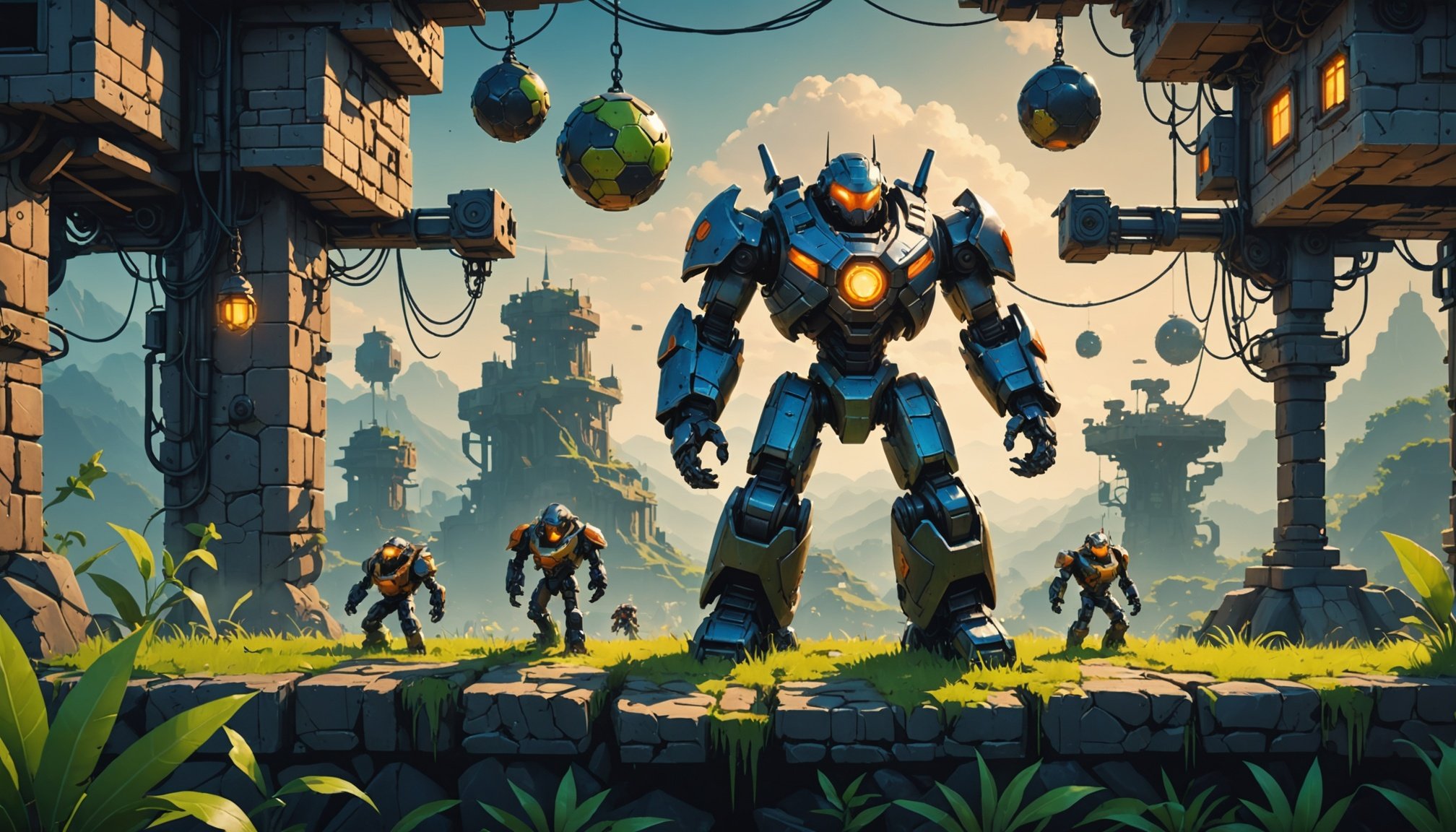Understanding Neural Networks in Game Development
Neural networks are a cornerstone of modern game development, especially in enhancing AI programming. These systems imitate the human brain’s structure, enabling machines to learn and make decisions, a critical aspect for AI programming. In the realm of gaming, neural networks are predominantly used to create more adaptive and intelligent game AI, elevating players’ experience by introducing unpredictability and challenge.
Developers are increasingly integrating neural networks to produce dynamic enemy behaviors that adjust to the player’s tactics. For instance, rather than having preset actions, enemies programmed with neural networks can learn from past interactions to thwart players more effectively. This results in a more immersive and engaging gameplay as players encounter uniquely responsive adversaries.
Additional reading : Essential Safety Protocols for Leveraging Virtual Reality in Mental Health Therapy Games
The versatility of neural networks shines in their adaptability to diverse game genres. Convolutional Neural Networks (CNNs), for example, excel in visual data processing, making them ideal for games with intricate graphics. Recurrent Neural Networks (RNNs), on the other hand, are suited for sequence prediction, allowing them to anticipate player actions based on historical data.
By harnessing different neural network architectures, developers can tailor their AI programming to meet specific gameplay objectives, delivering unforgettable gaming experiences.
Additional reading : Conquering Lush Jungle Flora: Essential Tactics for Creating Immersive Exploration Games
Designing Dynamic Enemy AI
Designing dynamic enemy AI is vital for creating engaging game mechanics in platformer games. The key to dynamic behavior is the AI’s ability to adapt to player actions, making each encounter unique. This adaptability enhances the gaming experience by offering unpredictable and challenging scenarios.
Understanding player behavior is crucial in crafting intelligent enemy AI. Analyzing how players react in different situations allows developers to fine-tune AI strategies. By incorporating analytics, developers can predict player movements and adjust enemy reactions appropriately, ensuring a balanced yet challenging gameplay experience.
Incorporating player behaviour analysis is essential for effective Enemy AI Design. This involves collecting data on player strategies and patterns to refine AI responses. A well-designed dynamic AI learns from these patterns to provide a tailored challenge.
Balancing difficulty through intelligent enemy behaviours is another crucial element. If enemies are too predictable or erratic, it can detract from the playability of the game. Dynamic enemy AI helps to maintain the right level of challenge, keeping players engaged without causing frustration.
Using neural networks to implement these ideas allows for intelligent adaptation, refining AI behaviours as more player data becomes available. These techniques underscore the role of neural networks in developing sophisticated and interactive game mechanics.
Implementing Neural Networks for Enemy AI
The integration of neural networks within enemy AI systems necessitates strategic implementation techniques. Selecting the appropriate framework is paramount; TensorFlow, PyTorch, and Unity ML-Agents offer tailored solutions for game development. Each presents unique advantages, such as user-friendliness or performance optimization, critical for seamless neural network implementation.
Choosing the Right Framework
When selecting a framework, consider software compatibility, scalability, and community support. For instance, Unity ML-Agents provides expansive tools specifically designed for AI programming in interactive environments. This choice significantly impacts your development efficiency and AI performance.
Coding Neural Networks for Game Enemies
Developers should focus on establishing a strong foundation with robust coding techniques. Typically, this involves defining neural network architecture (e.g., layers and activation functions), configuring training protocols, and integrating analytics to evaluate enemy performance. Such meticulous planning ensures that the AI evolves adaptively within the game environment.
Example Code Snippets
Utilizing practical code snippets expedites the development process. A simple snippet might initialize a network with defined layers and parameters. For example, a basic Python snippet using TensorFlow may look like this:
“`python
import tensorflow as tf
model = tf.keras.Sequential([tf.keras.layers.Dense(128, activation=’relu’), tf.keras.layers.Dense(64, activation=’relu’), tf.keras.layers.Dense(10, activation=’softmax’)])
“`
These examples provide a hands-on starting point for crafting sophisticated enemy behaviors.
Enhancing AI with Training Techniques
Training neural networks effectively is pivotal for refining AI programming in games. The accuracy of game AI stems from carefully curated training data, essential for nurturing behavior modeling that resonates with actual player interactions. Creating sophisticated AI requires training networks to understand diverse gaming scenarios, thereby offering enriched player experiences.
A staple of successful training involves using robust machine learning techniques. Supervised learning is integral for teaching AI specific game functions, leveraging labeled data to guide its decision-making process. Conversely, reinforcement learning stands out, as it allows AI to learn optimal strategies through trial and error, progressively enhancing performance.
Evaluating AI performance is critical; developers should regularly assess and refine models to ensure they meet gameplay objectives. Metrics such as precision and recall—borrowed from datasets like the Stanford Question Answering Dataset (SQuAD)—are instrumental in this process. High precision ensures AI accurately executes tasks, while recall measures its ability to perform consistently across varying situations.
Refining AI models based on performance feedback solidifies their effectiveness, aligning them with intended game dynamics. This not only bolsters the game development process but enriches the player’s journey, painting AI as both a adversary and an ally in the interactive realm.
Optimization Techniques
In the realm of platformer games, employing optimization techniques for your AI systems is essential to maintain smooth gameplay. The fundamental goal is to balance advanced AI programming with efficient resource management. This balance ensures that neural network operations do not impede game performance, which is crucial for engaging player experiences.
AI Optimization strategies involve streamlining neural network processes to minimize computational load. Techniques such as pruning, quantization, and caching are noteworthy. For instance, pruning involves removing less significant neural connections, thus reducing network size and computational demands. This technique is particularly beneficial in resource-intensive environments where maintaining performance is paramount.
Efficient resource management also demands attention to memory and processing power when integrating neural networks. By leveraging lightweight models or employing on-device AI processing, games can better handle AI complexities without sacrificing frame rates or responsiveness.
However, it’s crucial to recognize potential pitfalls, such as oversimplifying AI models leading to dull gameplay, or excessive optimization causing loss of nuanced behaviours. Avoiding these requires a fine-tuning approach and ongoing evaluation. By striking the right balance, developers can ensure that AI contributes positively to game dynamics without overwhelming the system, enhancing both playability and enjoyment.
Case Studies and Real-World Applications
Platformer games have redefined gaming experiences by incorporating nuanced dynamic enemy AI, revealing the prowess of neural networks and AI. Let’s explore some successful case studies and real-world AI examples in these genres.
One standout example is “Hollow Knight,” where enemy AI design challenges through intelligent adaptation, led by its robust behavior models. The game’s adaptive difficulty system intelligently analyses player actions, altering enemy tactics in response. This creates a satisfying, yet ever-challenging game experience. Lessons from such games underscore the importance of designing flexible AI capable of adapting mid-game.
Another notable case is “Celeste,” a beloved platformer that highlights the use of AI for balancing between challenge and player satisfaction. By learning from past player behaviour, its AI pushes the envelope of player ability, ensuring consistent engagement without overwhelming difficulty. Similar applications reveal the necessity for ongoing iterations and player feedback to achieve such successful outcomes.
The synthesis of neural networks, thoughtful game design, and iterative refinement in these case studies provides invaluable insights for developers. By focusing on player behavior analysis and adaptable AI strategies, developers can craft games that remain fresh, engaging, and cognitively challenging. Such examples pave the way for future innovative platforms that blend entertainment with sophisticated AI.
Best Practices for AI Development
Developing robust AI for games requires an understanding of best practices in AI Development. A structured development workflow streamlines the process of integrating AI into game design, ensuring a cohesive approach. Essential to this workflow is creating a cycle of iterative testing, which facilitates ongoing refinement of AI behaviours. By continually testing AI, developers can collect valuable insights and make informed adjustments that enhance gameplay.
Iterative testing is crucial, allowing developers to address issues early and adapt AI to player feedback. This approach helps in fine-tuning AI to meet the desired game dynamics, providing players with a balanced and engaging experience. Effective integration of player feedback not only aligns AI functionalities with player expectations but also significantly improves the overall game quality.
When implementing enemy AI, developers should be aware of common pitfalls such as over-complex design leading to gameplay disruption. Avoiding these mistakes requires adhering to simplified AI structures that are both efficient and effective. A common oversight is underestimating the impact of player feedback, which is vital to AI development success. By incorporating these best practices, game designers can create dynamic and responsive AI systems that elevate player engagement.











